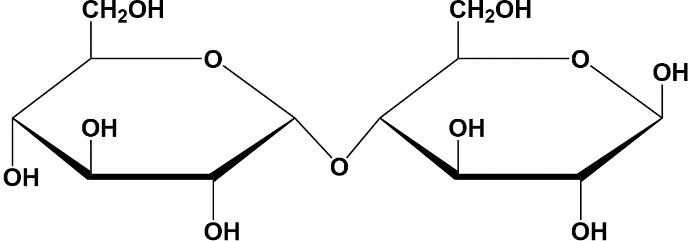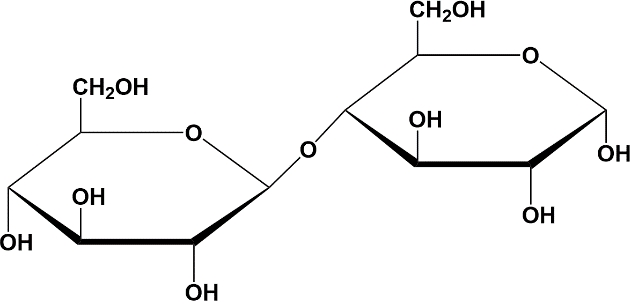Disaccharides are sugars composed of two monosaccharides linked together by a glycosidic bond. Among the numerous disaccharides found in nature, four of the most significant are maltose, cellobiose, lactose, and sucrose. Each of these disaccharides has unique structures and properties that influence their digestibility.
Maltose consists of two D-glucose units connected by an α-1,4-glycosidic linkage. It is commonly found in starch, which is present in many plant-based foods like potatoes, making maltose digestible for most mammals.
Cellobiose also comprises two D-glucose units, but they are linked by a β-1,4-glycosidic linkage. This structural difference means that, despite having the same sugar components as maltose, cellobiose is not digestible by most mammals. This highlights the importance of glycosidic bond configuration in determining digestibility.
Lactose, the sugar found in milk, is formed from one D-galactose and one D-glucose unit, linked by a β-1,4-glycosidic linkage. While lactose is generally digestible for most mammals, some individuals may be lactose intolerant, which affects their ability to digest this disaccharide.
Sucrose, commonly known as table sugar, consists of a D-glucose and a D-fructose unit. The glycosidic linkage in sucrose is more complex, involving both an α-1 and a β-2 glycosidic linkage. Sucrose is widely found in processed foods and is digestible by most mammals.
In summary, the digestibility of these disaccharides is influenced by their structural configurations. Maltose is digestible, cellobiose is not, while lactose and sucrose are generally digestible. Understanding these differences is crucial for recognizing how various sugars affect nutrition and metabolism.




